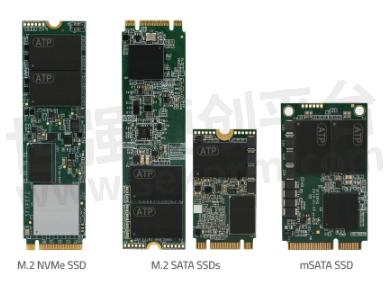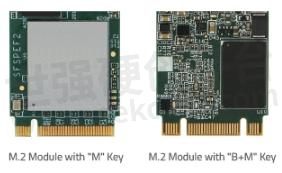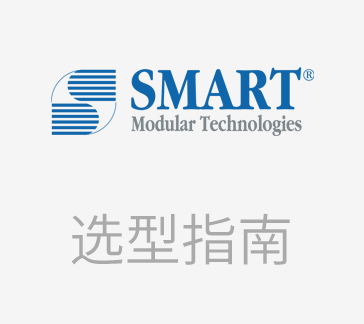Understanding the Differences Between an M.2 and mSATA SSD




M.2 SSDs: Big Performance Comes in Small Packages
Solid state drives (SSDs) released in recent years have become faster and more capable of handling large amounts of data. Their full capabilities, however, are being hindered or limited by the interfaces they are connected to. Serial ATA 3rd generation interfaces, designed for the much slower mechanical hard disk drives, run with a maximum native transfer rate of 6 Gb/s.
The Mini-SATA (mSATA) interface, though designed specifically to provide the smallest form factor for SSDs, is limited by the SATA 6 Gb/s link. The M.2 standard, a specification for internally mounted computer add-in cards, was created to address the limitations of mSATA and provide more options for small form factor cards, including SSDs in different sizes and with different capacities. M.2 was originally called the Next Generation Form Factor (NGFF), and then formally renamed to M.2 in 2013. M.2 improves on the mSATA standard, which uses the PCI Express® Mini Card physical card layout and connectors. As mSATA's "successor," M.2 provides higher performance and capacity while minimizing module footprint.
An M.2 SSD module is connected to a host either through a SATA interface or via a PCI Express (PCIe) lane. Though M.2 supports both SATA and PCIe, an M.2 module may only be inserted in either one of the two interfaces, so check your motherboard documentation to make sure that your module fits and works with the corresponding socket on the motherboard.
Differences Between an M.2 and mSATA SSD
Both are high-performance SSDs designed for small devices such as laptops and tablets. The mSATA interface used to provide the smallest form factor for SSDs. However, it is limited by the SATA 3.0 link speed of 6 Gb/s and 1 TB maximum capacity. The M.2 form factor was borne out of the need for multiple options for small form factor cards, including SSDs in different sizes and with different capacities, and possibilities for extending capacities even further. M.2 provides higher performance while minimizing module footprint. M.2 SSDs come in longer modules and with double-sided component population, enabling larger storage capacities within minimal spaces. It requires no power or data cables, making installation complete without the need for cable management.
M.2 SSDs support both SATA and PCIe interfaces. The SATA revision 3.2 specification, in its gold revision as of August 2013, standardizes the SATA version of M.2 as a new format for storage devices and specifies its hardware layout. For the PCIe version, details are included in the PCI-SIG M.2 Specification Rev. 1.1.
Physically, they look different and cannot be plugged into the same sockets. The pictures below show ATP M.2 and mSATA SSDs. 

SATA or NVMe?
SATA remains one of the most widely used interfaces in industrial and enterprise applications, so M.2 SATA modules are optimal choices for those who want compatibility with existing systems as well as the convenience of hot-swapping and hot-plugging. M.2 modules designed for a SATA interface will perform according to the latest SATA 3rd generation standard, which is up to 6 Gb/s.
Enterprises and client systems with a greater need for speed can take advantage of the Non-Volatile Memory Express or NVM Express® (NVMe™), an interface specification developed specifically for NAND flash and next-generation SSDs. NVMe leverages existing PCIe technology to efficiently support the growing bandwidth needs of enterprise and client systems. An NVMe-based M.2 SSD module installed on a PCIe x2 lane will run at 15.75 Gb/s, while a module installed on a PCIe x4 lane will run at 31.5 Gb/s – a massive leap in speed and performance.
An M.2 SSD module is designed only for either a SATA or PCIe interface, not both at the same time, although some systems may have M.2 sockets that will support either one or both interfaces.
ATP offers both M.2 SATA and PCIe solutions. ATP NVMe SSDs are designed for a PCIe 3.0 x4 interface.
Size Matters
M.2 modules come in different sizes and can also be utilized for Wi-Fi, WWAN, Bluetooth, GPS, and NFC.
M.2 SSDs typically come in three dimensions, which may be deduced from the card name —2242, 2260, and 2280 — "22" represents the width in millimeters (mm), while the next two digits represent the length, also in mm. The longer the drive, the more NAND flash chips can be mounted; hence, more capacity.
In choosing the right size, one has to consider how many SSDs can be packed into a chassis, as well as thermal management issues, which may be a significant factor for sustained performance. If the area for dissipating heat is insufficient, it may result to poor performance and instability in the long run.
The picture below shows ATP M.2 SSDs in different lengths.


Keys and Sockets
An M.2 SSD is "keyed" to prevent insertion of a card connector (male) to an incompatible socket (female) on the host. The M.2 specification identifies 12 key IDs on the module card and socket interface but M.2 SSDs typically use three common keys: B, M, and B+M. You will find the key type labeled on or near the edge connector (or gold fingers) of the SSD. Before deploying M.2 SSDs, determine the type of socket on the host and check the module connector keying, as each connector should be inserted only in the appropriate socket.
ATP M.2 SATA SSDs are B+M-keyed (can fit in sockets for B-keyed and M-keyed modules), while M.2 NVMe SSDs for PCIe 3.0 x4 lane are M-keyed.


Table 1. Module key IDs, pin locations and interfaces.
Source: "All About M.2 SSDs," Storage Networking Industry Association (SNIA). 2014.
M.2 connectors on the host are called "sockets." Each socket has a unique mechanical key, and modules are not interchangeable between sockets. According to PCI Express M.2 Specifications Rev. 1.1, the sockets are distinguished as follows:
Socket 1: Connectivity socket for Wi-Fi®, Bluetooth®, NFC (near-field communication) or Wi-Gig.
Socket 2: WWAN/SSD/Other Socket that will support various WWAN+GNSS (global navigation satellite system) solutions, various SSD and SSD Cache configurations, and other yet-undefined solutions. (If the motherboard has a Socket 2 for a WWAN card and it is not in use, the socket may accommodate a B+M-keyed small M.2 SSD. Please refer to your motherboard documentation for details).
Socket 3: SSD Drive Socket with SATA or up to four PCIe lanes.
Important Notes:
Please refer to your motherboard documentation to make sure that your M.2 module fits and works with the corresponding socket on the motherboard.
M.2 modules are neither hot-swappable nor hot-pluggable. Performing hot-swap or hot-plug may damage the modules and cause harm to the person performing this.
Conclusion
As SSDs continue to revolutionize the way enterprises handle data, choosing the right storage media in the right form factor and their corresponding interfaces will be critical. M.2 SSDs offering smaller, faster and more efficient storage enlarge the range of choices and solutions to match workloads with price and performance.
- |
- +1 赞 0
- 收藏
- 评论 0
本文由涂抹转载自ATP Blogs,原文标题为:What is M.2? Keys and Sockets Explained,本站所有转载文章系出于传递更多信息之目的,且明确注明来源,不希望被转载的媒体或个人可与我们联系,我们将立即进行删除处理。
相关推荐
【经验】什么是SSD的M.2标准?M.2 SSD和mSATA SSD之间又具体有哪些差异?
近年来发布的固态驱动器(SSD)变得更快,并且能够处理大量数据。但是,它们的全部功能受到与其连接的接口的阻碍或限制。Mini-SATA(mSATA)接口虽然专为提供最小的SSD尺寸而设计,但受到SATA 6 Gb / s的限制。M.2标准是内部安装的计算机附加卡的规范,旨在解决mSATA的局限性,并为小型卡(包括不同大小和容量的SSD)提供更多选择。
How Over-provisioning Improves NAND-based ATP SSDs’Endurance and Performance
Over-provisioning (OP) provides additional space for garbage collection process of solid-state drives (SSDs), aids in improving the performance, and increases their endurance, hence contributing to extended drive life. This article ATP provides an in-depth view of OP and how its size affects the terabytes written (TBW), along with random write performance of SSDs.
What is NVMe SSD and What are the Benefits?
ATP M.2 2280 NVMe SSDs are designed for a PCIe 3.0 x4 interface and comply with NVMe 1.2 specifications. Along with up to 1 TB memory capacity, sequential read speed of up to 2,540 MB/s, and sequential write speeds up to 1,100 MB/s, ATP M.2 NVMe SSDs exceed the SATA interface bandwidth 2x-3x, eliminate bottlenecks, and deliver a dramatic performance boost over AHCI standards. ATP M.2 2280 NVMe SSDs integrate 3D NAND MLC technology, enabling higher memory capacity, lower cost per bit, and increased longevity.
SMART(世迈科技)DuraFlash™闪存产品选型指南
目录- Company Portfolio/Products Applications Flash Storage Product Introduction 2.5” SATA M.2 SATA mSATA Slim SATA M.2 PCIe NVMe U.2 PCIe NVMe EDSFF / U.2 PCIe NVMe (Enterprise and Data Center SSDs) BGA eMMC 5.1 Memory Cards CF Cards/CFast Cards eUSB Flash Drives/USB Flash Drives RUGGED SSD LINE-UP
型号- N200,R800,RU350,SP2800,S5E,RU150,T5E,M4,R800V,BGAE440,S1800,BGAE240,RD130M,ME2,M1HC,H9 CF,M1400,HU250E,M4P,T5EN,T5PFL,RU150E,N200V,T5PF,RD230M,MDC7000,XL+,RD230
PCIe® Gen 3 NVMe M.2 2280 / 2242 / 2230 SSD The Global Leader in Specialized Storage and Memory Solutions
型号- FT960GP38AG8BPC,N750PI,FT480GP38ANDBFC,FT120GP38AG8BPC,FT480GP38AG8BPC,FT480GP34ANDBFC,FT960GP38AG8BPI,FT240GP38AG8BPC,FT120GP38ANDBFC,N700PC,FT240GP38AG8BPI,FT120GP38AG8BPI,N600SC,N650SI,N600VI,FT960GP34ANDBFC,N700PI,FT240GP38ANDBFC,N600SI,FT120GP34ANDBFC,N650SC,FT240GP34ANDBFC,N600VC,FT480GP38AG8BPI
PCIe® Gen 3 NVMe M.2 2280 / 2242 / 2230 SSD
型号- FT960GP38AG8BPC,N750PI,FT480GP38ANDBFC,FT120GP38AG8BPC,FT480GP38AG8BPC,FT480GP34ANDBFC,FT960GP38AG8BPI,FT240GP38AG8BPC,FT120GP38ANDBFC,N700PC,FT240GP38AG8BPI,FT120GP38AG8BPI,N600SC,N650SI,N600VI,FT960GP34ANDBFC,N700PI,FT240GP38ANDBFC,N600SI,FT120GP34ANDBFC,N650SC,FT240GP34ANDBFC,N600VC,FT480GP38AG8BPI
Bringing 3D TLC NAND Flash Endurance and Reliability Closer to SLC/MLC
The advent of 3D NAND technology allowed for more relaxed lithography and broke planar NAND limitations. By stacking cells vertically, 3D NAND flash increased drive reliability and endurance. ATP breaks new ground with its new 3D TLC-based SATA SSDs.
CP2700 | PCIe NVMe | M.2 2280 SSD
型号- FDMP8256GTCXB182,CP2700,FDMP81024TCXB182,FDMP8512GTCXB182,FDMP8128GTCXB182
ATP Launches Its Tiniest PCIe Gen3 x4 NVMe™ SSDs in M.2 Type 1620 HSBGA Package
ATP Electronics, the global leader in specialized storage and memory solutions, has announced the launch of its tiniest NVMe flash storage offering: the N700 Series PCIe® Gen3 x4 NVMe™ solid state drives (SSDs, which are available as M.2 Type 1620 heatsink ball-grid array (HSBGA) package.
ATP‘s Power Loss Protection Just Got Smarter with MCU-based SSD Design
ATP customers want constant assurance that power loss events will not cause massive downtime or lost data that could affect business operations and lead to higher operating costs. The MCU intelligently monitors sudden power failure conditions from a glitch to a surge or a complete outage...
SMART Modular Introduces Ruggedized, High-Speed, High Capacity, High Security T6EN SSDs for Aerospace, Defense and Industrial Applications
SMART Modular Technologies announced its new ruggedized T6EN PCIe/NVMe flash drives for aerospace, defense, and industrial applications. This new family of SSDs is available in U.2, E1.S and M.2 2280 form factors, enabling flexibility for end users based on their specific application and configuration needs.
PCIe® Gen 4 NVMe M.2 2280 SSD The Global Leader in Specialized Storage and Memory Solutions
型号- FT3T84P48APHBFC,FT1T92P48APHBYC,FT240GP48APHBPC,FT240GP48APHBPI,FT960GP48APHBYI,N651SI,AF960GSTJA-HBAXX,FT1T92P48APHBPI,N601VI,FT480GP48APHBFI,FT3T84P48APHBFI,FT1T92P48APHBPC,FT480GP48APHBFC,FT960GP48APHBYC,N651SC,N601VC,FT960GP48APHBFC,FT240GP48APHBSC,FT960GP48APHBFI,FT480GP48APHBYI,FT240GP48APHBSI,AF240GSTJA-HBBXX,AF1T92STJA-HBBXX,AF480GSTJA-HBBXX,FT1T92P48APHBYI,FT480GP48APHBPI,FT480GP48APHBPC,FT1T92P48APHBFC,FT960GP48APHBSI,FT1T92P48APHBFI,FT960GP48APHBSC,FT3T84P48APHBYC,FT240GP48APHBFC,FT480GP48APHBYC,AF960GSTJA-HBBXX,FT240GP48APHBFI,FT240GP48APHBYC,FT240GP48APHBYI,FT480GP48APHBSI,N751PI,FT480GP48APHBSC,FT3T84P48APHBYI,FT960GP48APHBPI,N601SC,FT1T92P48APHBSI,AF1T92STJA-HBAXX,AF240GSTJA-HBAXX,FT960GP48APHBPC,AF480GSTJA-HBAXX,FT1T92P48APHBSC
SMART’s DuraFlash CS210 SATA 2.5” Solid State Drives are Designed for General-purpose Industrial Applications
SMART’s DuraFlash CS210 SATA 2.5” solid state drives are designed to meet the demand for a cost-effective solution in general-purpose industrial applications.
DRAM-less Value Line SSDs Available in I-Temp/C-Temp Operable Models
型号- A600VC SERIES,N600VI,A600VI,A600VI SERIES,A600VC,N600VC SERIES,N600VC,N600VI SERIES
The ATP Gym and Coach System: Exercising SSDs to Ensure Total Fitness
With the Gym and Coach system, ATP has dramatically improved RDT and the initialization process for functional test details. By making industrial SSDs undergo a lot of “painful” exercises through stringent testing, ATP makes sure that customers have everything to gain by receiving the most robust, reliable and enduring flash storage products for their applications.
电子商城



































































































































































































登录 | 立即注册
提交评论